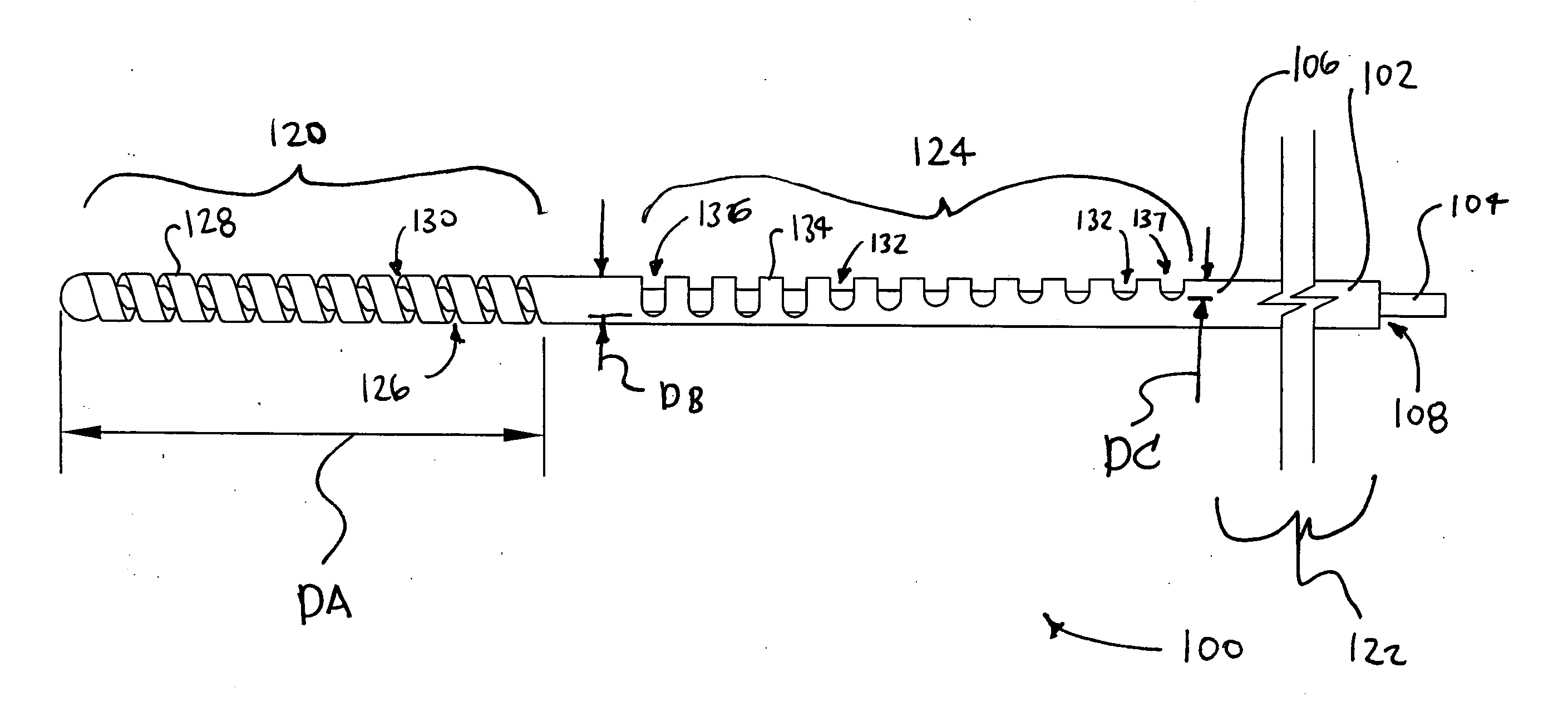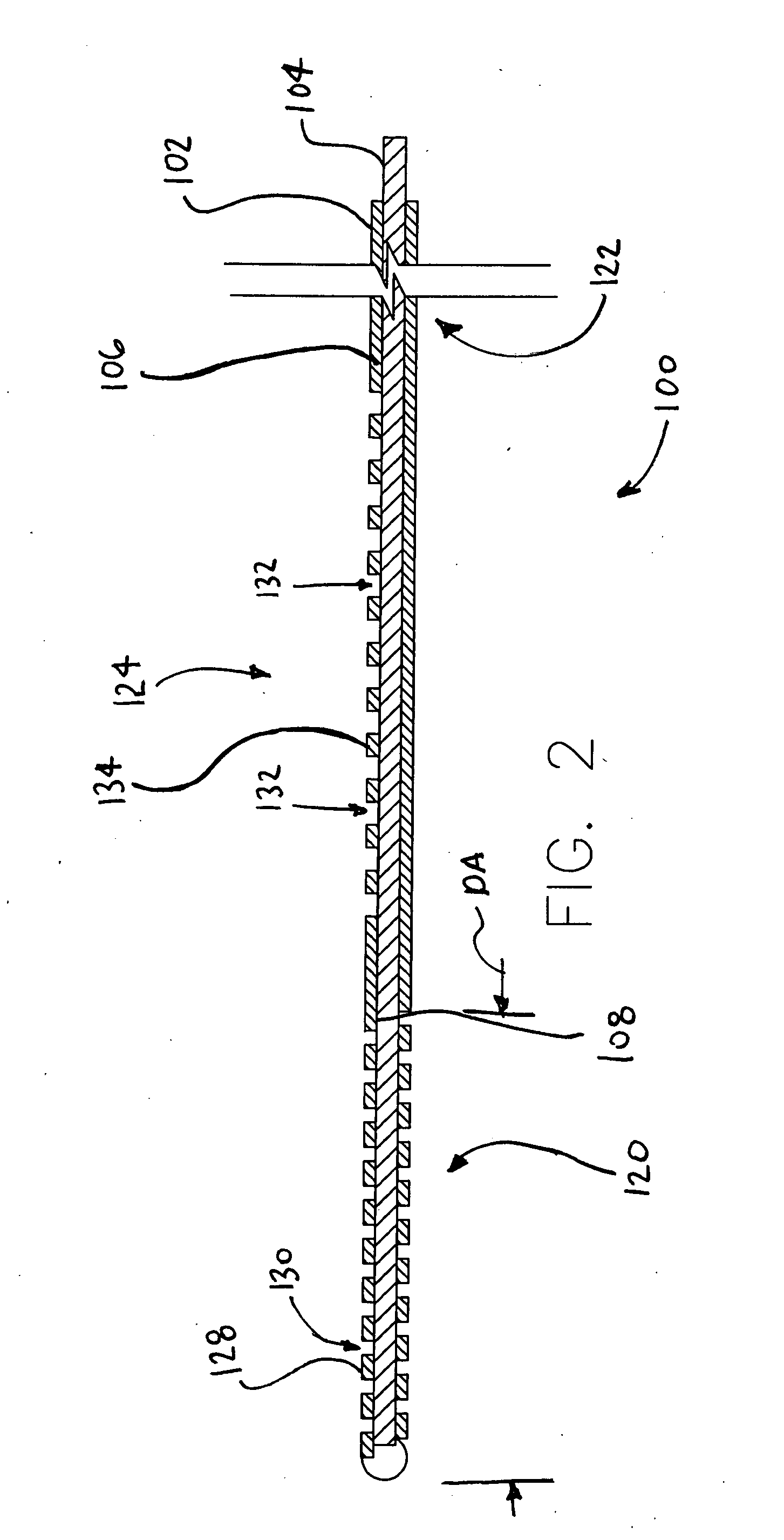Articulator with adjustable stiffness distal portion
a technology of distal portion and articulator, which is applied in the field of surgical procedures, can solve the problems of affecting the vasculature of patients and affecting the patient's vasculature negatively, and complicating the procedure the length of time that patients are subjected to these interventions
- Summary
- Abstract
- Description
- Claims
- Application Information
AI Technical Summary
Benefits of technology
Problems solved by technology
Method used
Image
Examples
Embodiment Construction
[0028] An articulator of the present invention can be advanced into various body lumens to facilitate the performance of various minimally invasive medical procedures. Examples of body lumens include blood vessels, tear ducts, lymph vessels, lumens for the passage of bile, lumens for the passage of urine, and gastrointestinal lumens. Examples of minimally invasive medical procedures include percutaneous transluminal coronary angioplasty (PCTA), endoscopic retrograde cholangio-pancreaticography (ERCP), endovascular treatment of brain aneurysms, atherectomy procedures, biopsy procedures, and stenting procedures.
[0029] An articulator of the present invention can be used to position and / or deliver a variety of medical devices. The medical device used in conjunction with the articulator can be positioning in any suitable manner with respect to the articulator, including within, surrounding, along the length of, or axially concentric with the articulator (e.g., within or surrounding the ...
PUM
 Login to View More
Login to View More Abstract
Description
Claims
Application Information
 Login to View More
Login to View More - R&D
- Intellectual Property
- Life Sciences
- Materials
- Tech Scout
- Unparalleled Data Quality
- Higher Quality Content
- 60% Fewer Hallucinations
Browse by: Latest US Patents, China's latest patents, Technical Efficacy Thesaurus, Application Domain, Technology Topic, Popular Technical Reports.
© 2025 PatSnap. All rights reserved.Legal|Privacy policy|Modern Slavery Act Transparency Statement|Sitemap|About US| Contact US: help@patsnap.com



